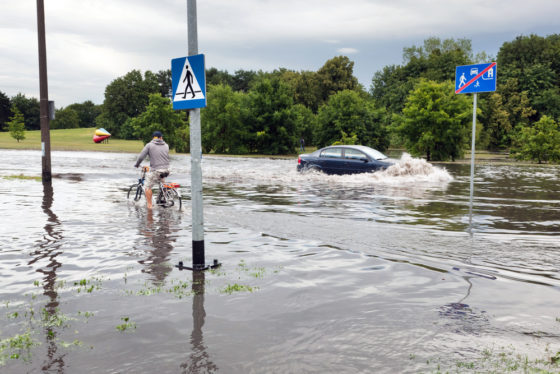Despite being below sea level, most Dutch not worried about future floods


A large majority of the Dutch population is confident the authorities will be able to protect the country from future flood risks, a new survey shows.
Some 1,100 people participated in the survey, which was held by the high tide protection body Hoogwaterbeschermingsprogramma, an alliance between the infrastructure ministry and the provincial water authorities.
It is 25 years ago this week that extreme high water levels in the rivers Rhine, Meuse and Waal forced some 250,000 people in Gelderland, Overijssel and Limburg out of their homes in what was the largest post-war evacuation of people in the Netherlands.
Four in five of the respondents said they were confident the authorities would take appropriate and timely action to ward off flooding although many said they were worried about rising sea levels and melting polar ice caps. Some 93% said it would be necessary to invest in extra infrastructure such as dikes, water pumping stations and surge barriers.
Only 3% of the respondents said they would consider moving away from areas that would be under threat from high tides.
Turning point
The events in 1995 marked a turning point in water management, Bas Jonkman, professor of hydraulic engineering at TU Delft, told broadcaster NOS.
‘After 1995 we became more professional. Dikes were put through their paces every six years and we started a programme called Room for the River, which created extra space for flood water in over 30 places.’ The system helped to prevent major problems in 2018 when the water level in the Waal at Nijmegen measured over 14 metres above normal levels.
As sea levels rise, how long until the Netherlands is under water
Can the Netherlands save itself from rising water levels
River delta specialist Frans Klijn says the risks of large scale flooding are real. ‘We could be faced with a situation similar to that of 25 years ago,’ he said. ‘Climate change will be forcing us to adjust the safety norms on a continual basis.’
Klijn also questioned the wisdom of great concentrations of people continuing to live and work in low lying areas, such as the urban belt stretching from Rotterdam to Amsterdam.
‘We limit the chances of things going wrong but we are increasing our vulnerability. It would be better to build in places that are higher up, such as Twente and Brabant,’ he said.
Thank you for donating to DutchNews.nl.
We could not provide the Dutch News service, and keep it free of charge, without the generous support of our readers. Your donations allow us to report on issues you tell us matter, and provide you with a summary of the most important Dutch news each day.
Make a donation